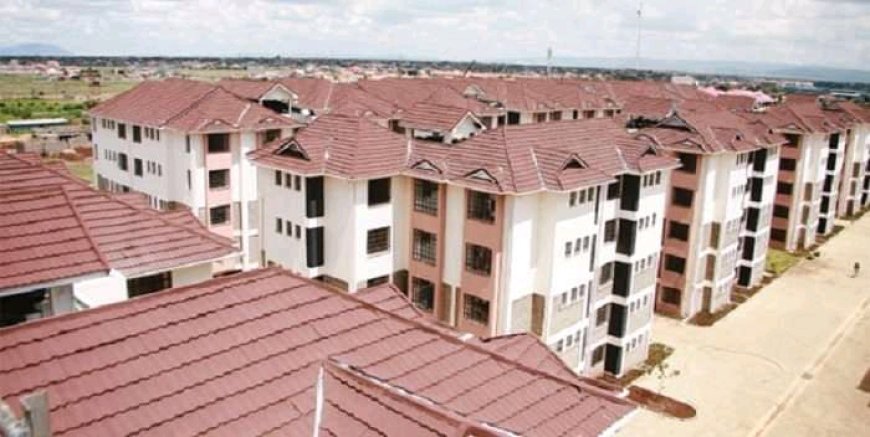Informal settlement project to address climate change in Kisumu County

Kisumu,
Thursday, August 24, 2023
KNA by Joseph Ouma
The World Bank funded Kenya Informal Settlement Improvement Project (KISIP II) which was allocated Sh1.3 billion this financial year has prioritized Climate Change in Kisumu County.
The allocation is slightly lower than Sh1.5 billion spent on KISIP I which consigned Climate Change issue Yrs to the backburner until this year when the development partners unanimously agreed that it cannot be brushed aside anymore.
Kisumu County Director of Housing & Urban Development, Geoffrey Nyangi said the project was at the tendering stage with funding from the World Bank and other development partners who channel the support through the national government while counties are the implementing arm.
Nyangi informed the national Government Coordination Committee on Development chaired by Kisumu County Commissioner, Hassan Alason Hassan yesterday that KISIP II is a 5-year project of the Government of Kenya (GoK).
The project is supported by the World Bank through the International Development Association (IDA), the Swedish International Development Cooperation Agency (SIDA) and the Agence Francaise de Development (AFD).
KISIP I supported an Integrated package of investments to comprehensively upgrade settlements covering 36 informal settlements in 11 urban centers benefitting 1.2 million people.
KISIP II will support the same types of investments: roads, bicycle paths, pedestrian walkways, street and security lighting, vending platforms, solid waste collection and sorting, storm water drainage, water and sanitation systems, public parks and green spaces.
Nyangi disclosed that the menu will also include investments related to prevention of crime and violence, including but not limited to community centers. Like KISIP I, the second phase will support an integrated package of investments to comprehensively upgrade settlements.
Under KISIP II, most of the infrastructure will contribute to climate resilience and the project will have substantial climate change adaptation and mitigation co-benefits.
Additionally, counties who benefitted from high-mast lighting under KISIP I have requested for energy efficient options as the cost of keeping the lights on has been high, KISIP II will therefore implement energy efficient options in lighting.
KISIP II’s second component covers Socio-Economic Inclusion Planning which will support the development of community-level socio-economic plans. The plans intend to identify the communities’ socio-economic needs and then address how best these can be met.
These plans will determine activities that will take place in new or existing community centers and will also determine how best to raise awareness on the benefits of public spaces and green zones, and proper solid waste disposal and how to provide these within the settlements.
Vulnerable community members will be prioritized as key beneficiaries in these plans. Through county social development and community development officers, KISIP II will link vulnerable community groups, including those at risk of violence, to existing World Bank and government safety nets programs.
This component will be implemented only in settlements undergoing infrastructure upgrading so as to provide both socio-economic and infrastructure benefits to the same community.
In preparation for KISIP II, KISIP I financed the preparation of detailed designs and bidding documents for upgrading plans for 39 settlements in six counties namely Nairobi, Kilifi, Kakamega, Kisumu, Nakuru and Mombasa.
Implementation of these plans will ensure that KISIP II is able to provide relatively quick and high-impact results. An additional 17–20 settlements in other counties will also benefit from infrastructure upgrading.
However, not all counties will be able to access the funds, and clear criteria will be developed during preparation that allow selection to be made on technical grounds. Alternatively, the funds can be allocated for integrated settlement planning for tenure regularization and infrastructure, allowing the development of a pipeline for future investment.
All counties will be eligible for support for integrated settlement planning for tenure regularization and infrastructure. KISIP II is expected to support about 74 settlements from KISIP I (which have benefited from tenure regularization) with detailed designs and bidding documents for settlement upgrading plans.
It will support an additional 75 settlements with integrated planning for both tenure regularization and infrastructure. All counties will be eligible for support under this component. However, detailed eligibility criteria will be established to ensure that the work has a high impact.
Such criteria could include, overall population of the settlement, density of the settlement, and assurance that settlement is on government land, which the government is willing to release for tenure regularization
Courtesy; KNA
What's Your Reaction?


































































































































































































































































































